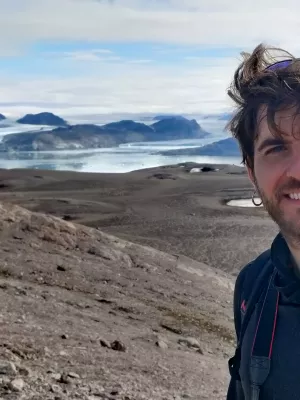
Albert Brangarí
Researcher

A mechanistic model (BCC-PSSICO) to predict changes in the hydraulic properties for bio-amended variably saturated soils
Author
Summary, in English
The accumulation of biofilms in porous media is likely to influence the overall hydraulic properties and, consequently, a sound understanding of the process is required for the proper design and management of many technological applications. In order to bring some light into this phenomenon we present a mechanistic model to study the variably saturated hydraulic properties of bio-amended soils. Special emphasis is laid on the distribution of phases at pore-scale and the mechanisms to retain and let water flow through, providing valuable insights into phenomena behind bioclogging. Our approach consists in modeling the porous media as an ensemble of capillary tubes, obtained from the biofilm-free water retention curve. This methodology is extended by the incorporation of a biofilm composed of bacterial cells and extracellular polymeric substances (EPS). Moreover, such a microbial consortium displays a channeled geometry that shrinks/swells with suction. Analytical equations for the volumetric water content and the relative permeability can then be derived by assuming that biomass reshapes the pore space following specific geometrical patterns. The model is discussed by using data from laboratory studies and other approaches already existing in the literature. It can reproduce (i) displacements of the retention curve toward higher saturations and (ii) permeability reductions of distinct orders of magnitude. Our findings also illustrate how even very small amounts of biofilm may lead to significant changes in the hydraulic properties. We, therefore, state the importance of accounting for the hydraulic characteristics of biofilms and for a complex/more realistic geometry of colonies at the pore-scale.
Department/s
- BECC: Biodiversity and Ecosystem services in a Changing Climate
Publishing year
2017-01-01
Language
English
Pages
93-109
Publication/Series
Water Resources Research
Volume
53
Issue
1
Document type
Journal article
Publisher
American Geophysical Union (AGU)
Topic
- Earth and Related Environmental Sciences
Status
Published
ISBN/ISSN/Other
- ISSN: 0043-1397

